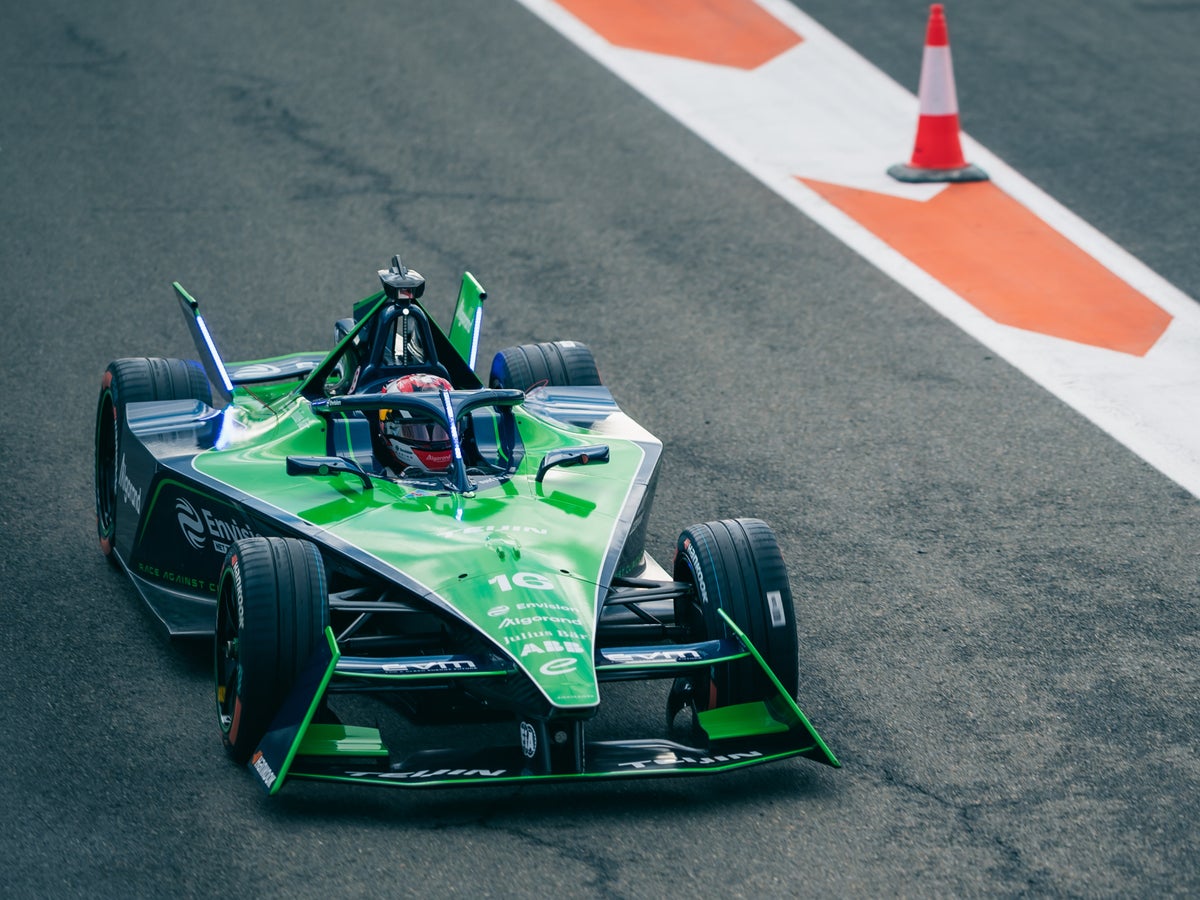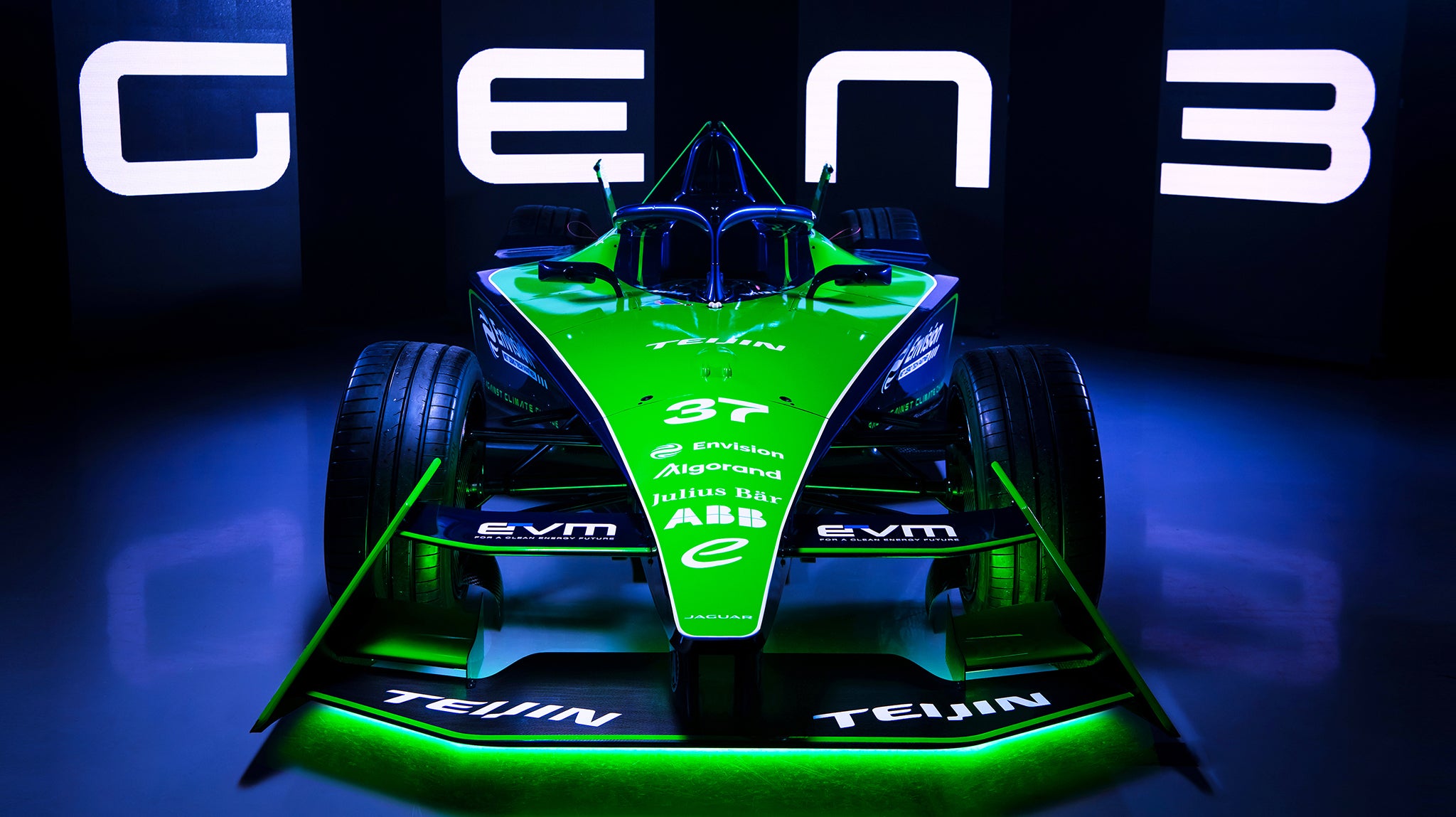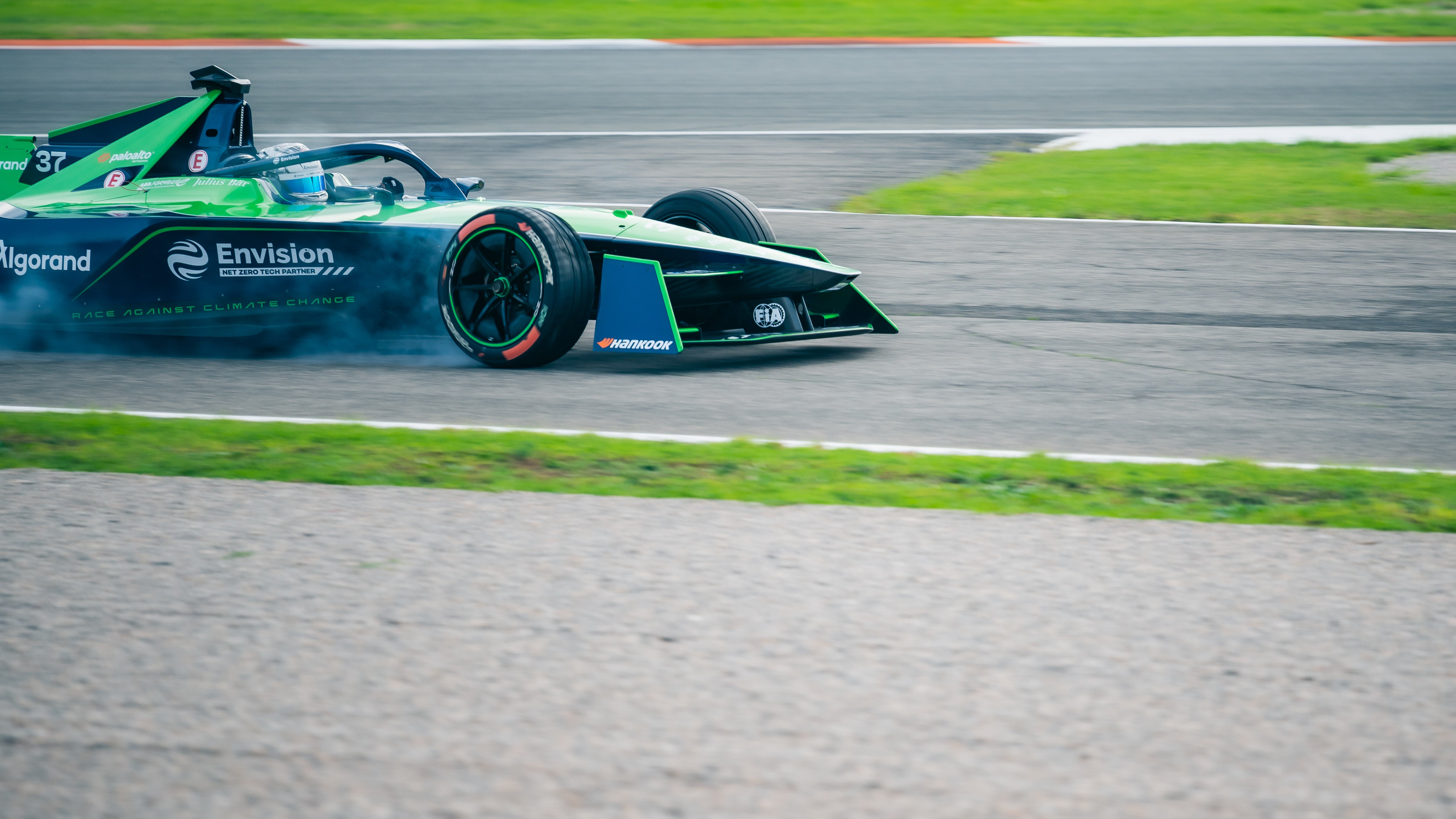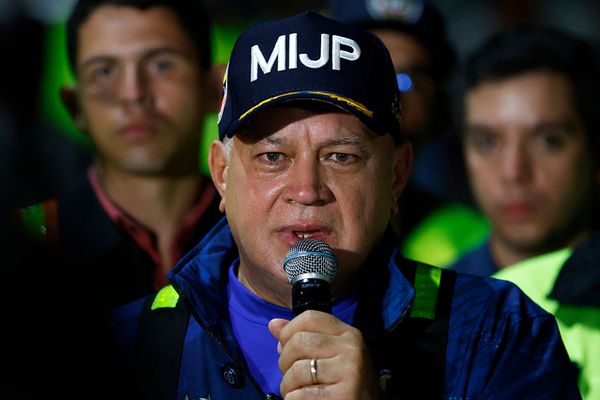
With the new year fast approaching, Formula E is preparing for yet another leap forward with a changed team line-up, new countries and cities on the agenda and, most notably of all, a brand new car for the all-electric, no-emissions, fast-growing racing championship.
Last term certainly marked a step up in several notable ways for FE, with audiences continuing to grow and one of the star drivers in Nyck de Vries earning himself a seat in Formula 1. But 2023 is a crucial year again, not least of all because the technology underpinning the entire championship has taken another gigantic pace: in comes Gen3, the third iteration of racecars in less than a decade – slimmer, lighter, inherently faster.
This week in Valencia, Formula E teams and drivers are in testing mode, preparing for the challenges lying ahead in Season 9 and getting to grips with the machines which will propel them towards glory...or otherwise. In a sporting sense, at least.
In the wider context of electric vehicles – and few sport championships can lay claim to having as broad a raison d’etre as Formula E – though, there is only looking forwards. There is only the push to improve the tech and enhance the global adoption of electric mobility, as a means to combat the climate fight and elevate sustainability within sport.
Sylvain Filippi, team principal of Envision Racing, is naturally invested in the success of both – and is acutely aware of the fact that progress never slows. In fact, the sport is already looking years into the future for the next iteration of EVs in the sport, he confirms.
“We’ve had Gen4 discussions already in Monaco – we’ve realised the technology evolves so quickly, so it’s a mix of setting a roadmap not too early, but not starting too late,” he tells The Independent. “Once Gen3 is going we’ll sit down and start to look at big-picture objectives for Gen4. Then the FIA will set a roadmap for the technology. The manufacturers will start to think about it across the next year and a half or two years.
“You have a sporting working group for the technology, a technical working group and then various other forums where we discuss it. And then organise very regular meetings! What I still like in Formula E is that it’s still the big decisions, big long-term decisions are still a very collegial approach, it’s in all common interests that we make the biggest decisions for the sport.”
That, though, is for the future. Now are the first official days of Gen3 on the track, the proving ground in eastern Spain offering some drivers a first real taste of the new design and giving teams a chance to fine-tune how they intend to head into the new season.
And it’s not all about the car on the track either, as Filippi explains – the whole setup requires an adjustment. Partly that is down to the change in gear being used, but also the faces involved, such as newly signed driver Sebastien Buemi.
“We need the best possible partnerships with the manufacturer, the drivers, the team equipment. In moving from one cycle to another, from one car to another, you have to rethink your garage equipment – there are a lot of details like that which really matter in performance, as well as a few drivers, Seb coming on board with so much experience and technical development which is going to be so, so valuable with the new car.”
As for Buemi, the Swiss driver who was last year with Nissan and previously with Toro Rosso in F1, he’s keen to add as much time with the new EV as possible before competitive action gets underway. That’s particularly key given upcoming alterations in the race which, on certain weekends, will include the trial of pit stops for a rapid battery recharge, even without considering the fact it’s a brand new car.

“We were lucky to drive a few tests already so that we don’t go into Valencia testing and discover it for the first time,” he told the Independent. “It’s so important because FE is basically a one-day event – so everything you can do to maximise time a little bit is vital.
“The car is totally different but the tyres are one of the key factors in performance. It’s a totally new manufacturer so we need to learn what works well and what doesn’t. The cars are so similar so you need to make a difference in these kinds of aspects. The fact we will regenerate [power] so much, the fast-track charging in the pit stop and the way we recover energy will also be really different to what we’re used to.”
Buemi is optimistic about the new car making a big impact, particularly on the opening weekend in Mexico which he feels could suit its characteristics.
In terms of attracting fans to the championship, it’s pretty straight forward: give them improved power, greater acceleration.
“[The track in Mexico] gives some good opportunities to see the speed of the Gen3 – because we also want to show that the cars are faster. I am just looking forward to faster cars, I think that’s what we need.
“Now, obviously, the Gen3 should be a big step, but I’m waiting to see how it looks like on TV; basically, if we can really perceive the difference, which I think we can. And maybe in the future, having an even faster car obviously is important because I believe the fans have to be somehow impressed by the speed. If you really want to attract people, you need to make sure they are really impressed with the performance of the car.”
So exactly how much more of a wow factor comes with Gen3?
How much more noticeable are the raw dynamics of the race set to be affected and how far have Formula E come between Gen2 and Gen3 cars?

“On the sporting side one of the most exciting aspects of Formula E is the technology. Not all fans follow it that carefully but some really care about it,” Filippi says. “It’s 60, 80 kilos lighter, faster, two powertrain lines instead of one but it’s lighter, narrower, shorter – the progress is so rapid.
“The motors compared to five years ago are two or three times the power, yet smaller and lighter. The innovation is crazy. There’s nearly no energy loss between battery to wheel.”
And leading back to the virtuous circle that FE can bring, that innovation doesn’t just stay on-track – it will rapidly make its way to people’s own vehicles as a result of what the manufacturers learn by analysing testing, sims and raceday driving.
“Software can take a few months. It’s that quick. Jaguar demonstrated that: they increased the range [of a commercial EV] about 20 miles, not changing anything about the car, simply software optimisation.
“Hardware improvements are starting to happen now too. FE was pioneering very high-voltage architecture. It gives a more efficient per-mile travel and a lot quicker recharge.
“We start with the same energy in the battery and then the more we can regen, the more free energy you have. This will trickle down to road cars: if you do your slowing down on regen, that’s extra range for no cost and no weight in the car. That’s something that will make its way through to public EVs.”
Indeed, it already is, particularly in public transport. There are already a huge range of trains and buses in the public domain which utilise this technology, projects planned and some already trialled.
Formula E cannot take credit for the innovation of it all, let alone the implementation, but it displays the real-world uses for it and gets an audience accustomed to the technology working. The cleaner, greener end result is only half of the equation, too – as the current energy crisis and spiralling costs only serve to demonstrate, in almost every household around the nation and beyond right now.
That, as much as anything, might make Season 9 and 2023 the moment for Formula E to seize, to hammer home the importance of change and the role it can play within that.

“We’re here to promote the cars, the championship: show people that electric cars can be powered by renewable energy more than ever – get people excited about the transition to EVs, but also renewable energy,” said Filippi.
“It’s critical to success and the reason why EVs are so good – they are already three times more efficient than traditional cars. But if the energy to power EVs also comes from renewable sources, it’s a grand slam. That’s always been what we are trying to promote and what we believe in.
“With everything happening in the last six months on the energy crisis front, it’s even more topical.
“It’s not sustainable to rely on gas and so on. So outside the sporting aspect, our message is very popular and attractive. The timing is good and the whole world is focusing on that subject – so our purpose feels very valid at the moment.”
::The ABB FIA Formula E World Championship returns on Saturday 14 January for the Mexico City E-Prix with races across the season live on Channel 4 and Eurosport







